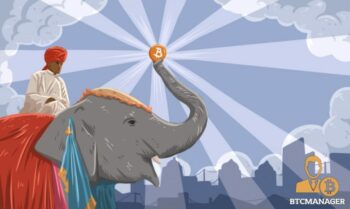
2020-1-9 09:24 |
Coinbase and Circle are facing off against Binance in what could be a battle of stablecoins, and ultimately a war for the highly regulated and lucrative U.S. market.
Battle of the TitansWith Binance creating a U.S.-based exchange last September to service American customers, the industry found itself with two of its leading exchanges pitted against one another.
Days after Binance.US launched, Coinbase announced the establishment of the Crypto Rating Council, a “a member-operated organization formed to assist market participants that trade or support crypto assets to comply with U.S. federal securities laws.” Coinbase and Kraken were two of the founding members, along with a cadre of other predominantly U.S. firms, including Anchorage, Bittrex, Circle, DRW Cumberland, Genesis, and Grayscale Investments.
Coinbase’s timing, as well as Binance’s exclusion, is noteworthy.
Circle Abandons Expansion Plans Amid Regulatory UncertaintyCircle grew from a Boston-based peer-to-peer payments company in 2013 to a behemoth of the cryptocurrency industry in 2018. That year, it purchased struggling exchange Poloniex along with crowdfunding platform SeedInvest. It launched its own stablecoin USD Coin and a payments app, Circle Pay, that it hoped would complete with Jack Dorsey’s Square.
By the end of 2019, it had sold Poloniex to an Asia-based consortium and discontinued its payments app to “focus on stablecoins.” It closed down Circle Research and its footprint in the crypto sector continued to shrink. It then sold its OTC trading desk to Kraken. CEO and co-founder Jeremy Allaire warned U.S. lawmakers that complying with largely unclear regulations was becoming too onerous for crypto enterprises.
Before Congress last July, Allaire testified:
“In the United States, regulatory uncertainty and the application of laws that do not contemplate digital assets has led to the loss of significant opportunity. The Securities and Exchange Commission, for example, is forced to apply Federal laws written in the 20th century to technologies created in the 21st… the results of the uncertain and restrictive regulatory environment has led many digital asset projects and companies to domicile outside of the United States.”
With countries as varied as Bermuda (in which Circle created a legal entity), Malta, France, and Switzerland forging ahead with crypto-friendly regulations, the balkanization of crypto had begun. Circle was its highest profile scalp.
Having Shrunk, Circle Returns to the Center of Cross-Border CompetitionHaving fully divested itself of the risks of operating an exchange and executing OTC trades, Circle appears to have been recently gaining support inside the U.S. via its stablecoin. The company has positioned itself to assume a leading role in the stablecoin infrastructure, believing that “The global interest in stablecoins and digital currency backed by central bank money, the introduction of third generation public blockchains, and the accelerated global policy interest in crypto all provide an exciting backdrop for our new platform services in 2020.”
USDC is the second-largest stablecoin in the ecosystem. Although dwarfed by Tether’s almost $5 billion market cap, USDC comes in easily at number two, with a market cap around half a billion dollars. Paxos sits third at roughly $150 million. Binance’s newly minted BUSD has a cap of under $20 million.
Courtesy The Stablecoin Index, Stablecoins by market cap. Tether: Green, USD Coin: BlueBlockFi has recently announced the creation of a supported USDC BlockFi Interest Account. USD Coin will join the Gemini dollar as the second stablecoin the crypto-financial services company will pay depositors interest on. Kraken has also announced plans to add support for USDC on its trading platform as of today.
Those developments follow Binance’s controversial decision to delist a number of USDC trading pairs from its exchange. Citing low volume, trading on ALGO/USDC, FTM/USDC, ONT/USDC, XLM/USDC, and USDS/USDC pairs will no longer be available. A range of USDC trading pairs were also slashed in a wide-ranging reconfiguration last year, with over 20 other stablecoin trading pairs also axed.
Binance’s founder Changpeng Zhao claims the removal of the five USDC trading pairs was “nothing personal” and based solely on low volumes.
Nothing personal, just low liquidity. No one’s trading it. https://t.co/zQqkzy1nt0
— CZ Binance (@cz_binance) January 6, 2020
But some observers have noted that many other trading pairs on Binance suffer from even lower volumes, yet continue to be offered. One response tweeted by BullChain illustrates poor liquidity among a number of trading pairs that are still supported.
pic.twitter.com/09oqaqCOho
— BullChain (@BullChain) January 6, 2020
A Game of Binance versus Coinbase?Binance’s delisting of USDC, Paxos, and True USD trading pairs last year came within a week of the launch of Binance.US. Its current delisting of five additional USDC trading pairs coincides with both Kraken and BlockFi announcing support for the second-largest stablecoin.
With Binance starting from its exclusion from the Crypto Rating Council and attempting to establish BUSD, we could be witnessing a balkanization of crypto in a war between the international, U.S., and to some extent the Chinese markets. The industry that is global by nature may be showing the first signs of what happens when rival exchanges face off against each other in the same jurisdiction, and when the regulatory environment in the country that matters most to cryptocurrency differs markedly from that elsewhere.
Binance has been the master of regulatory arbitrage, nimbly bouncing from China, Japan and ultimately to Malta where it managed to find welcoming regulators. Coinbase’s approach of strict compliance in the U.S. with less of an international impact has mirrored that of Circle’s. Perhaps the Binance culture is a poor fit for American soil and hostilities will result, or maybe Binance may end up dominating the U.S. as well.
As with everything in crypto, time will tell. One way or the other, Circle has lept back into the industry after a year looking like it was trying to leave to face an atmosphere where U.S. crypto and Asian crypto markets may be at a point of divergence.
The post The Stablecoin War Between Coinbase and Binance appeared first on Crypto Briefing.
origin »Binance Coin (BNB) íà Currencies.ru
|
|


